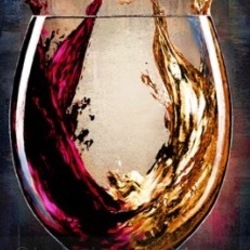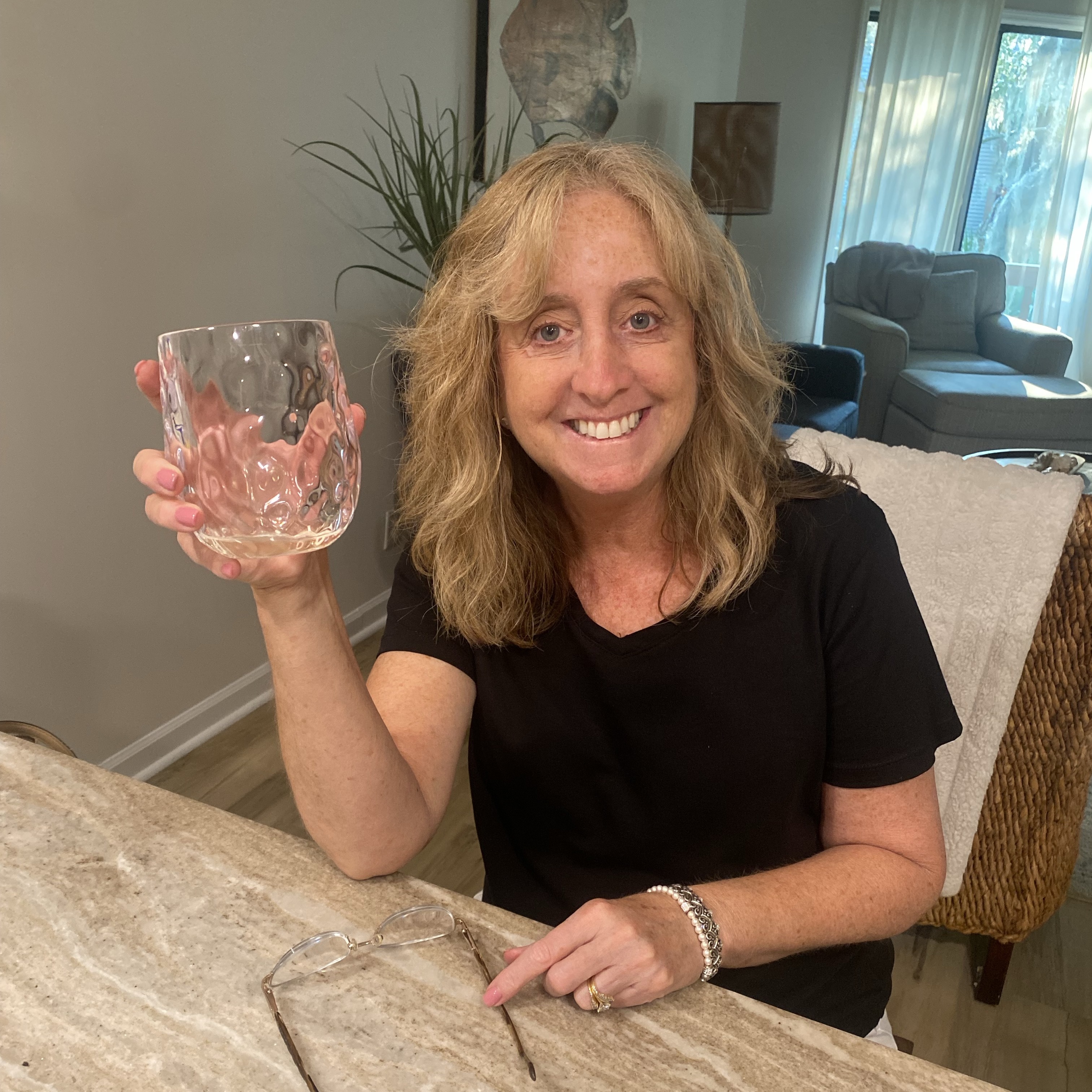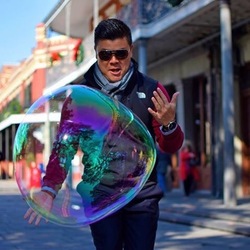Fourty Seven Friends
Flora Springs
Trilogy Napa Valley Cabernet Sauvignon Blend 1993
They should have called the Winery Floral Springs based on the nose. Beautiful; blackberry, black raspberries, dark cherries, strawberries, dry cranberries and plum floral fruits. Nice spice, vanilla, touch of clove & cinnamon, used leather, dark rich soil, crushed volcanic minerals, black fruit tea, black raspberry cola and dark fresh florals with violets. The tannins are 95% resolved. The body is lush & ripe. The length, tension & structure are nearing the end. Just a few years left of being worthwhile. However, the balance is stereo tuned. The fruit on the palate shows even more elegant & ripe floral fruits than the nose. Blackberry, black raspberries, dark cherries, strawberries, dry cranberries and plum floral fruits. Nice spice, vanilla, light clove & cinnamon, used leather, dark rich soil, crushed volcanic minerals, black fruit tea, black raspberry cola and dark fresh florals with violets for days. The acidity is like a waterfall. The beautiful, long, elegant finish is a little lean yet has a nice richness. Beautiful wine that just missed 9.2. Photos top to bottom and left to right. The Winery; which is separate from the other tasting room only on Hwy 29. The tasting room on Hwy 29 in St. Helena, Flora Spring caves and the front of their tasting room along Hwy 29. Producer notes and history...the stone winery on the grounds were built in 1885 by two immigrant brothers from Scotland, James and William Rennie. They were in construction, built the winery and planted 60 acres of grapes. The brothers had some bad fortune when phylloxera consumed the vines, and then a fire in 1900 destroyed their wine press and cooperage. In 1904, they sold the winery and fifteen years later Prohibition started. The winery was then closed until 1933. That year, Louis Martini, looked into their magic eight-ball and saw Prohibition collapsing and bought the Rennie property. They built a new stone house and also made a reserve wine from the hillside vineyards. However, the old winery remained empty until the Komes family bought the property, 325 acres, the old farm house, the newer stone house and 60 acres of vineyards. The son thought he’d persuade his dad to restore the old winery and proposed to call it Chateau Jerome. Although it had been designed by Hamden McIntyre an architect of several other classic 19th-century Napa wineries, by 1977, the place was a wreck. The tin roof of the building had so many holes in it. They called it the starlight roof. His father looked at it and stated, “I’ve worked all my life for my good name. I don’t want to squander it now.” John’s mother, Flora, however, sided with her son on the potential of the property. Carrie Komes suggested they could name the winery for her mother-in-law. Combined with the abundant springs on the land, they decided the name would be Flora Springs. It was a sure way to their mom’s heart and father’s wallet. Komes put his construction expertise to work on renovating the old winery, which still had scorch marks on the walls. So skeptical was his father about his son’s wine-making project, they divided the winery building. John rented half where he put his first fermenting tank, which he named R2D2. He invited a couple of friends from his wine-making class to help make wine at the new place. He also hired Mary Ann Graf, who in 1965 had been the first woman to graduate from the viticulture and enology department at UC Davis to help manage the project. She told John, “if you don’t hire a winemaker, I’ll quit.” He did and the 1979 Flora Springs chardonnay won a gold medal at the Los Angeles County Fair. In those days, it was fairs, not ratings. This was his first lesson in marketing as they sadly sold all the wine before they won the medal. Fairs were the big news instead of ratings as Parker had not yet risen to fame as he was the only one to call the grand 1982 Bordeaux vintage correctly. They submitted their 1981 Cabernet to eight fairs and won seven gold medals. From there, the winery just kept growing. They were the 67th winery in the county. Over the years, they had their ups and downs, but kept growing. One of their highlights was the creation this wine, Trilogy. It was one of the first Meritage blends in the valley. By 1984, they planted all the Bordeaux varietals; Malbec, Merlot, Cab Franc, Cabernet Sauvignon and Petit Verdot. They wanted to create a blend “by taste”, not by formula for a nice smooth wine that goes deep into the palate. They worked with a little of this and little of that. The first Trilogy was Cabernet Sauvignon, Merlot and Cab Franc. It was dubbed as velvet in the mouth. A lot of what they do is taming the tannins. One man who bought Trilogy by the case said, “it’s the only red wine his wife would drink young.” From the leftovers, they began making single-varietal estate wines. Another highlight was the discovery of a unique clone of Sauvignon Blanc in vineyards his father bought in Oakville. UC Davis could identify nothing like it in their vast library of clones. They were a bit ahead of the times, but this clone showed Flora Springs how different in that time period what Sauvignon Blanc could be like as it took all the grassiness out of Sauvignon Blanc. — 8 years ago



J. Lohr
Seven Oaks Paso Robles Cabernet Sauvignon 2012
Raymond had this 10 years ago
Evening Land Vineyards
La Source Seven Springs Pinot Noir 2012
I will let my friends opine on this beauty. — 9 years ago
Fourty-Seven Friends
Sonoma County Pinot Noir 2011
Part of the Bespoke Post Reserve box. Aerate using Blade Decanting Pourer. Sweet but pleasant zing to the tip of the tongue, enough complexity to make it a mouthful. Very nice. — 9 years ago
Seven Stones Winery (USA)
Napa Valley Cabernet Sauvignon 2013
Great spice depth opens up with time great wine to experience over several hours with friends and dinner — 9 years ago
Carlton Cellars
Seven Devils Willamette Valley Pinot Noir
One of my favorite wines and an amazing value. Shared with my friends at my birthday after consuming it previously — 10 years ago
Trader Moon
Moon X Black Pinot Noir
Another solid wine enjoyed with good friends. Solid, jammy, dark fruity... And seven freakin' dollars at Trader Joe's. — 7 years ago
C J Pask
Gimblett Road Cabernet-Merlot-Malbec
Wonderful seven course dinner with good friends and good wine — 7 years ago
Pepper Bridge
Estate Vineyards Walla Walla Valley Merlot 2014
The 14 is a blend of 77% Merlot, 16% Cabernet Franc & 7% Merlot. Nose of; ruby dark cassis, blackberries, black plum, dark cherries, black raspberries, hues of blue fruits, pepper and liquid violets. The mouthfeel is lush & ruby. M+ body & M+ tannins. Blackberries, dark cherries, black plum, black raspberries and hues of blue fruits. Crushed rocks, soft leather, dry herbs, underbrush, loamy soil powder, notes of cigar, violets, dark florals, nice acidity and beautifully round, lush finish with sex appeal. Photos of; an aerial view of Pepper Bridge, estate grapes going through veraison, Owner-Norm McKibben, and ground shot of the estate. Producer notes and history...Norm McKibben is one of founding fathers of Walla Walla's wine industry. To his good friends and colleagues, he is better know as "Stormin' Norman." In Norm's 30 plus years in Walla Walla, the valley has evolved from a 40 vineyard acres to an appellation with more than 2,800 acres under vine. A good portion of the boom can be attributed to Norm even after coming to the game late after working for several decades as an engineer in the construction industry. Not wanting to retire after, he moved to Walla Walla to become an apple farmer. In 1989, he realized Walla Walla's potential for grape growing. Norm planted his first vineyard with help from his wife, Virginia and their eldest son, Shane. Two years later, Norm added Cabernet Sauvignon and Merlot. These vines soon became the backbone of Pepper Bridge. Not long after he expanded his business and resume further. Norm got involved in the budding wine industry. He served as a partner and director at Canoe Ridge Vineyards, Hogue Cellars and worked with a number of Walla Walla's leading vintners. In 1996, he partnered with Gary Figgins of Leonetti Cellar and Marty Clubb of L'Ecole No. 41. At this point, McKibben had increased his vineyard holdings to 200 acres. In 1998, Norm officially started Pepper Bridge Winery. Today, Pepper Bridge Winery is a benchmark property in Walla Walla and Norm is an icon of the industry. He manages and consults for more than 600 acres of the top vineyard sites in Walla Walla; Pepper Bridge, Seven Hills and Les Collines. Norm also has introduced state of the art irrigation systems, soil moisture temperature monitoring equipment and sustainable farming techniques. Norm is a big believer in sustainable viticulture. All of his vineyards are certified sustainable by VINEA, the Walla Walla Valley's Sustainable Trust, and LIVE, an Oregon-based sustainable viticulture organization. They are also certified Salmon Safe and are monitored by the IOBC, the international body responsible for setting sustainability standards. In 1998, the Washington Association of Wine Grape Growers honored Norm as "Grape Grower of the Year." That same year, he was appointed chair of the Washington Wine Commission and served in that position until retiring from the organization in 2001. If there is a Maverick of the Walla Walla wine producers, it would be Norm. — 8 years ago
Seven Springs Winery
Blushing Springs Champagne Blend
Purchased at a Missouri wine festival. Shared with friends. they loved it! — 10 years ago













Ryan Vento
Nerd night at Vinology with our wine club friends.
.
This BDX blend offered a very classic expression of crushed gravel, dark red fruits, spices, and timber. Pretty enjoyable; wouldn’t mind circling back on it. Also pretty neat that some of the founders are native Houstonians. — 6 years ago